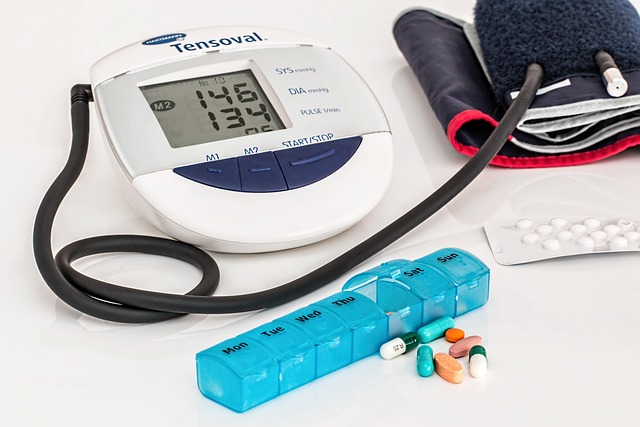Embarking on a health journey—whether it’s weight loss, fitness improvement, or adopting healthier habits—is an empowering decision. However, staying consistent and motivated over the long term can be challenging. Without clear ways to track your progress, it’s easy to lose sight of your goals or feel discouraged by perceived lack of results. The good news is that with the right strategies, you can monitor your achievements, celebrate small wins, and maintain the motivation needed to reach your ultimate objectives.
Why Tracking Progress Matters
Tracking your progress is more than just recording numbers—it’s about creating accountability, identifying patterns, and gaining insight into what works (and what doesn’t). When you see tangible evidence of improvement, no matter how small, it reinforces your commitment and boosts confidence. Additionally, tracking helps you:
- Recognize plateaus or setbacks early so you can adjust your approach.
- Break larger goals into manageable milestones.
- Build a sense of accomplishment that fuels continued effort.
Ways to Track Your Progress
There are many methods to measure progress beyond stepping on a scale. Here are some effective approaches:
1. Physical Measurements
- Weight: While not the sole indicator of success, tracking weight changes weekly can provide useful insights when combined with other metrics.
- Body Composition: Use tools like smart scales, skinfold calipers, or DEXA scans to measure body fat percentage, muscle mass, and water retention.
- Measurements: Take measurements of your waist, hips, arms, and thighs to track changes in shape and size.
2. Fitness Metrics
- Strength Gains: Record increases in weights lifted, reps completed, or new exercises mastered.
- Cardiovascular Endurance: Track improvements in running pace, cycling distance, or swimming laps.
- Flexibility and Mobility: Monitor progress in stretches, yoga poses, or range-of-motion exercises.
3. Photos and Videos
Progress photos and videos offer visual proof of transformation. Compare images taken at regular intervals (e.g., monthly) to notice subtle changes that might not be immediately obvious day-to-day.
4. Habit Tracking
Focus on consistency rather than outcomes. Apps or journals can help you log daily habits like drinking water, eating vegetables, meditating, or exercising. Seeing streaks of successful days builds momentum.
5. Health Markers
Regularly check non-scale victories such as:
- Improved energy levels
- Better sleep quality
- Enhanced mood and mental clarity
- Lower blood pressure or cholesterol levels (if applicable)
6. Technology Tools
Leverage apps and devices designed for tracking:
- Fitness trackers (e.g., Fitbit, Apple Watch) for activity, heart rate, and sleep data.
- Nutrition apps (e.g., MyFitnessPal, Cronometer) for calorie intake, macronutrient balance, and micronutrient tracking.
- Habit-building apps (e.g., Habitica, Streaks) to gamify your routine.
Staying Motivated Along the Way
Even with great tracking systems in place, maintaining motivation requires intentional effort. Here are proven strategies to keep you inspired throughout your journey:
1. Set SMART Goals
Ensure your goals are Specific, Measurable, Achievable, Relevant, and Time-bound. For example:
- Instead of saying “I want to get fit,” say “I will run a 5K in three months by following a training plan.”
2. Celebrate Small Wins
Acknowledge every milestone, no matter how minor. Did you complete your first week of workouts? Celebrate! Lost half a pound? That’s progress worth recognizing. Reward yourself with non-food treats like new workout gear or a massage.
3. Find Your Why
Reflect on why this health journey matters to you. Is it to set a positive example for your kids? To feel confident in your own skin? To reduce your risk of chronic diseases? Keeping your purpose front and center reminds you of the bigger picture during tough times.
4. Create Accountability
Share your goals with a friend, join a supportive community, or hire a coach. Knowing someone else is rooting for you—or holding you accountable—can make all the difference.
5. Mix It Up
Avoid monotony by varying your workouts, trying new recipes, or exploring different forms of movement like dance classes or hiking. Novelty keeps things exciting and prevents boredom.
6. Visualize Success
Spend a few minutes each day imagining how achieving your goals will look and feel. Visualization primes your brain to stay focused and optimistic.
7. Practice Gratitude
Shift your mindset from what you haven’t achieved yet to what you’re already grateful for. Appreciate your body for its resilience, strength, and ability to adapt. This perspective fosters self-love and reduces frustration.
8. Be Kind to Yourself
Progress isn’t always linear, and setbacks happen. Instead of beating yourself up, treat missteps as learning opportunities. Remind yourself that one bad day doesn’t define your entire journey.
Overcoming Common Challenges
While tracking and motivation are powerful tools, challenges are inevitable. Here’s how to handle common obstacles:
1. Plateaus
If progress stalls, reassess your approach:
- Adjust your calorie intake or exercise routine.
- Incorporate strength training to boost metabolism.
- Prioritize recovery through rest and proper nutrition.
2. Lack of Immediate Results
Remember that change takes time. Focus on the process rather than quick fixes. Consistency compounds over weeks and months.
3. Comparison Trap
Social media often showcases highlight reels, leading to unhealthy comparisons. Stay focused on your unique journey and avoid measuring yourself against others.
4. Burnout
Pushing too hard without adequate rest can lead to burnout. Schedule regular rest days, practice self-care, and listen to your body’s signals.
Building Long-Term Habits
Sustainable health journeys aren’t about perfection—they’re about building lasting habits. Consider these tips:
- Start small: Introduce one habit at a time to avoid overwhelm.
- Pair new behaviors with existing ones (e.g., stretch while brushing your teeth).
- Make healthy choices convenient by prepping meals, packing snacks, or laying out workout clothes the night before.

Leave a Reply